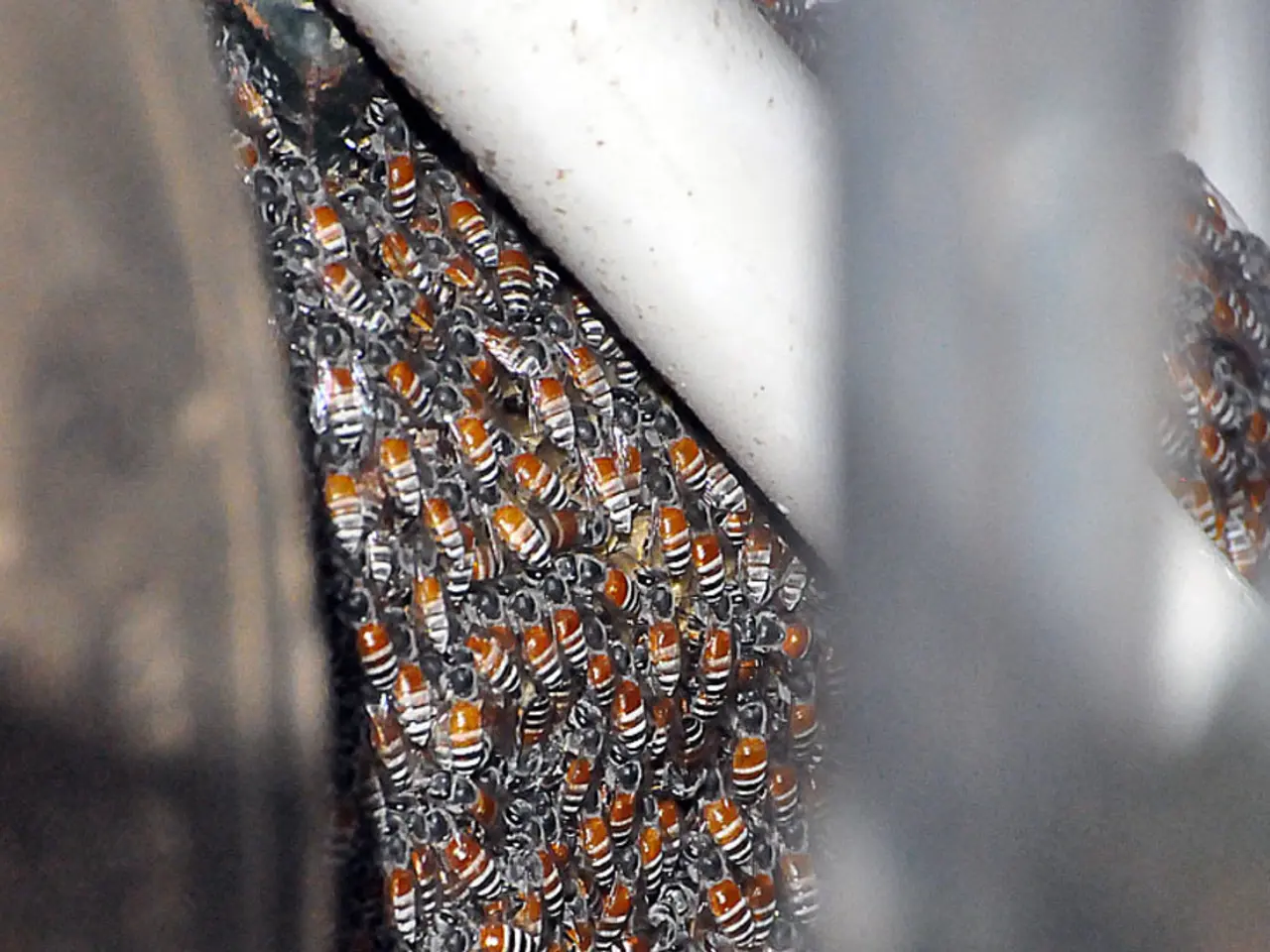Stinging wasps and the relief options: An exploration of remedies for their discomfort
In the warmer months, encounters with bees and wasps can sometimes lead to unwanted stings. Here's a guide on how to handle these situations effectively and safely.
Firstly, it's essential to remove the stinger quickly to stop the venom injection. If present, the stinger can be scraped out with a plastic card. Avoid squeezing the skin with fingers while doing so to prevent pushing more venom in. If you've been stung, it's likely a bee that stung, as wasps have smooth stingers that can be reused.
In case of an insect sting, cool the affected area with ice cubes or cold water. This simple step can help reduce inflammation caused by the sting. Cold also provides relief from the pain. If you suspect an allergic shock, call the emergency number 112 immediately. Around 2-3% of people in Germany have an insect venom allergy that can cause life-threatening allergic shocks.
For mild local reactions, several home remedies can help alleviate symptoms. Baking soda mixed with water forms a paste that can be applied to the sting. Its alkaline and drying properties help neutralize acidic venom and reduce itching and swelling. Apple cider vinegar, with its acidic pH, helps neutralize venom and relieve symptoms such as pain and swelling. Aloe vera gel moisturizes the skin and calms inflammation, providing soothing relief. Witch hazel serves as a natural astringent with anti-inflammatory and antiseptic properties, reducing swelling, calming itching, and preventing infection.
Additional steps include washing the sting site with soap and water to clean the area thoroughly and reduce infection risk. Applying a cold compress or ice pack can help lessen pain and swelling. Avoid scratching the area to prevent irritation and possible infection.
However, if symptoms worsen, spread, or if any signs of an allergic reaction occur (such as difficulty breathing, swelling of face or throat, dizziness), seek emergency medical care immediately. For people with a known allergy to stings, prescribed treatments such as adrenaline injectors should be used as directed by a healthcare professional.
Interestingly, onions, while a home remedy for wasp stings in some cultures, can irritate the skin due to their acid content if left on for too long. A light breeze or a puff of air can help cool the skin after a sting. In cases where an insect stings the mouth or throat, swelling may make breathing difficult. In such cases, suck on ice or an ice cube and apply a cold compress to the neck.
Stay safe and enjoy the outdoors by being prepared and knowing how to handle bee and wasp stings effectively.
[1] https://www.ncbi.nlm.nih.gov/pmc/articles/PMC3741551/ [2] https://www.ncbi.nlm.nih.gov/pmc/articles/PMC5668408/ [3] https://www.ncbi.nlm.nih.gov/pmc/articles/PMC2813563/ [4] https://www.ncbi.nlm.nih.gov/pmc/articles/PMC6783219/ [5] https://www.ncbi.nlm.nih.gov/pmc/articles/PMC6887636/
Maintaining a healthy lifestyle can help build resilience against the effects of insect stings. Regular exercise and fitness activities boost the immune system, which can help combat the venom's effects. Additionally, practicing good skin care is crucial in promoting skin healing; aloe vera, a popular ingredient in many skin-care products, can provide soothing relief to stung areas.




